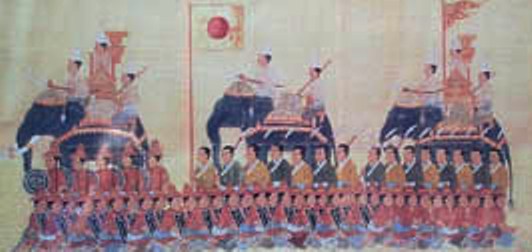I highly recommend reading a great, thickly detailed, optimistic article on Pakistan, “A New Deal in Pakistan,” by William Dalrymple in The New York Review of Books. The thrust of his nuanced article is that the stereotype of fundamentalist Pakistan doesn’t hold water and that the recent elections are a cause for hope:
To widespread surprise, the elections in Pakistan were free and fair; and Pakistanis voted heavily in favor of liberal centrist parties opposed to both the mullahs and the army. Here, in a country normally held up in the more Islamophobic right-wing press of Western countries as the epitome of “what went wrong” in the Islamic world, a popular election resulted in an unequivocal vote for moderate, secular democracy.
I certainly missed that; I knew there were elections and that they had gone badly for Musharraf, but I didn’t understand the full import of those elections. And Pakistan, over the last five years, has been changing. Among the changes that Dalrymple notes are the booming economy, especially in the cities (“full of gay designers and beautiful models”) and the growth of a newly prosperous middle class:
It was this newly enriched and empowered urban middle class that showed its political muscle for the first time with the organization of a lawyers’ movement, whose protests against the dismissal of the chief justice soon swelled into a full-scale pro-democracy campaign, despite Musharraf’s harassment and arrest of many lawyers. The movement represented a huge shift in Pakistani civil society’s participation in politics. The middle class were at last moving from their living rooms onto the streets, from dinner parties into political parties.
But these changes go beyond the secular city; even in traditionalist strongholds such as the Northwest Frontier Province (ancient Udyana, homeplace of none other than Padmasambhava but I digress), the pro-Taliban party in power lost, decisively, to the Awami National Party (ANP).
[The ANP] is a remnant of what was once a mighty force: the nonviolent and secular Red Shirts movement, which, before the creation of Pakistan, was originally led by Khan Abdul Ghaffar Khan, an important ally of Mahatma Gandhi from the North-West Frontier Province. Ghaffar Khan was locked up by one Pakistani general after another for much of the time between Partition and his death in 1988, but his political movement has survived both the generals and a succession of bomb blasts aimed at its party, and has now—after nearly fifty years in opposition—made a dramatic comeback under the leadership of Ghaffar Khan’s grandson, Asfandyar Wali Khan.
That’s a little dizzying to think about, Gandhi’s allies in charge — again! — of the NWFP.
Dalrymple’s article was so good that I went looking for more by him and I’m now, ecstatically, reading his From the Holy Mountain, about old Christian communities in the Middle East.


